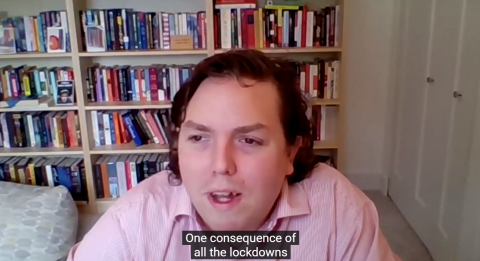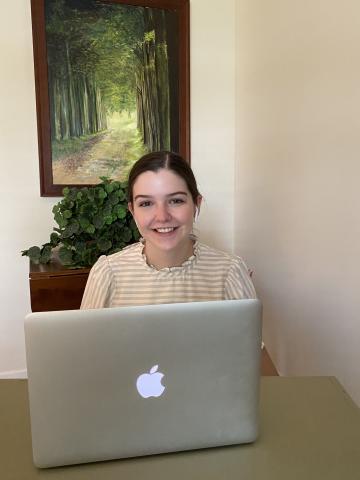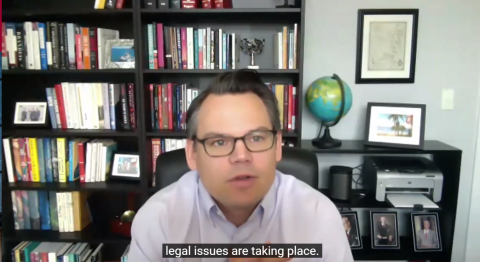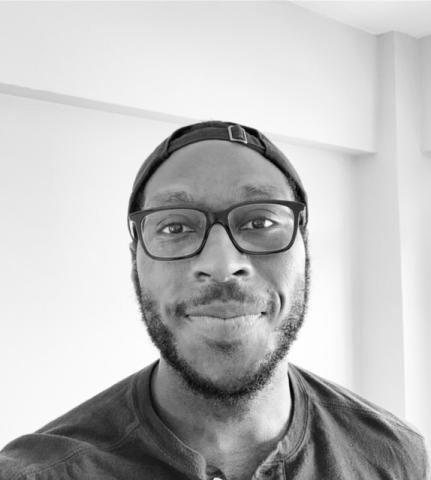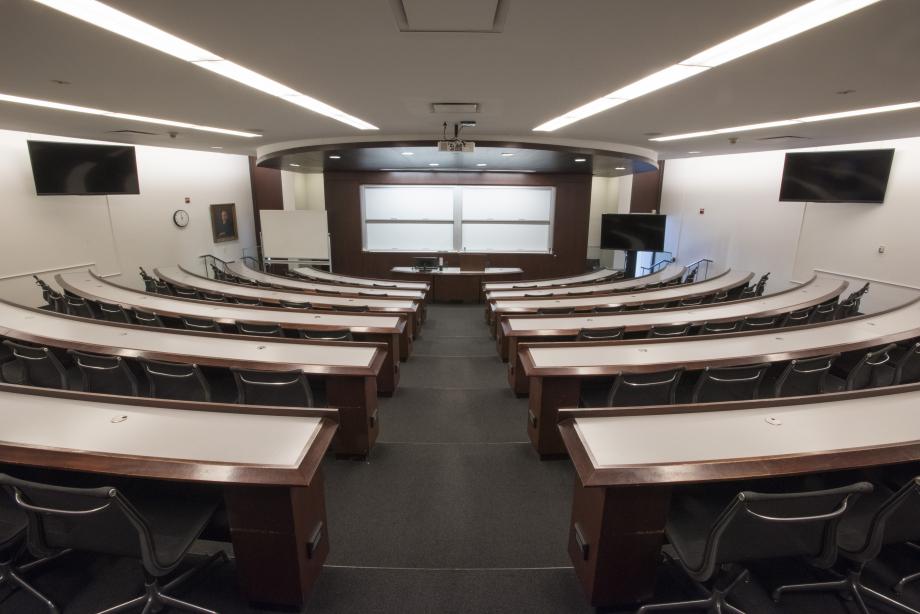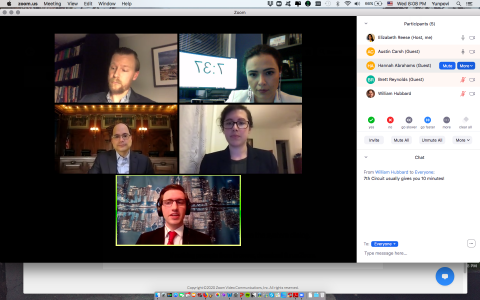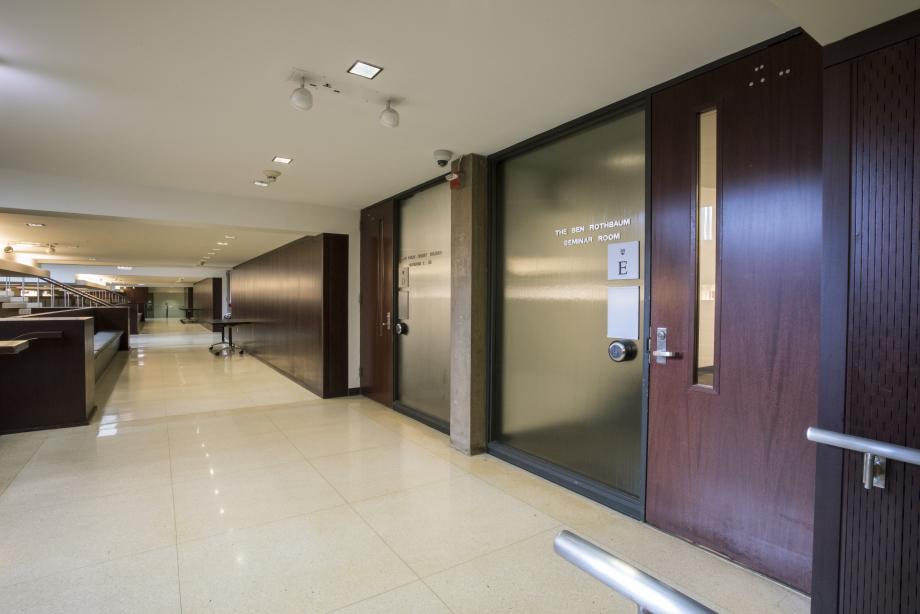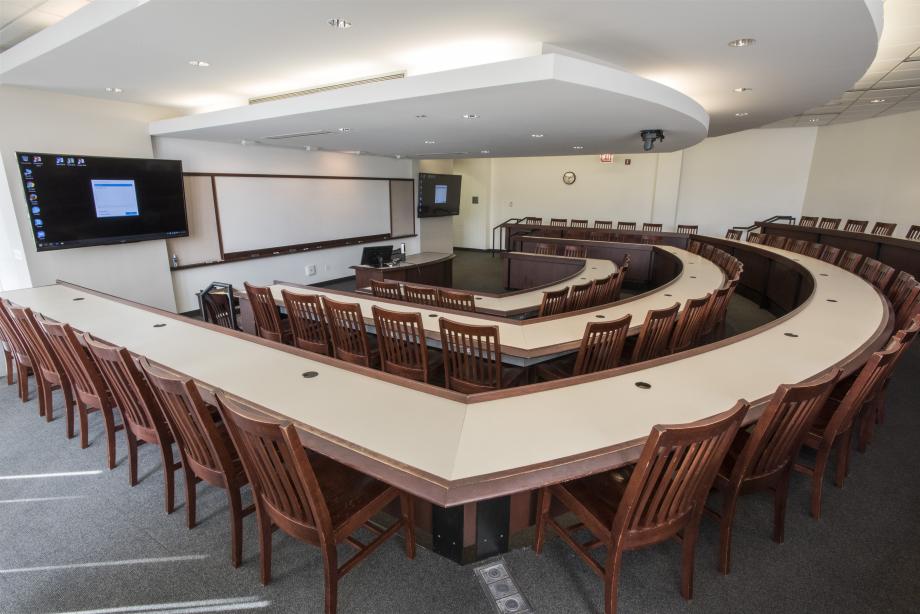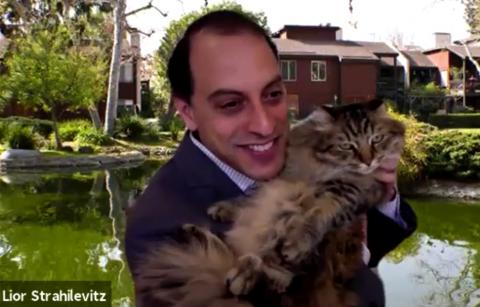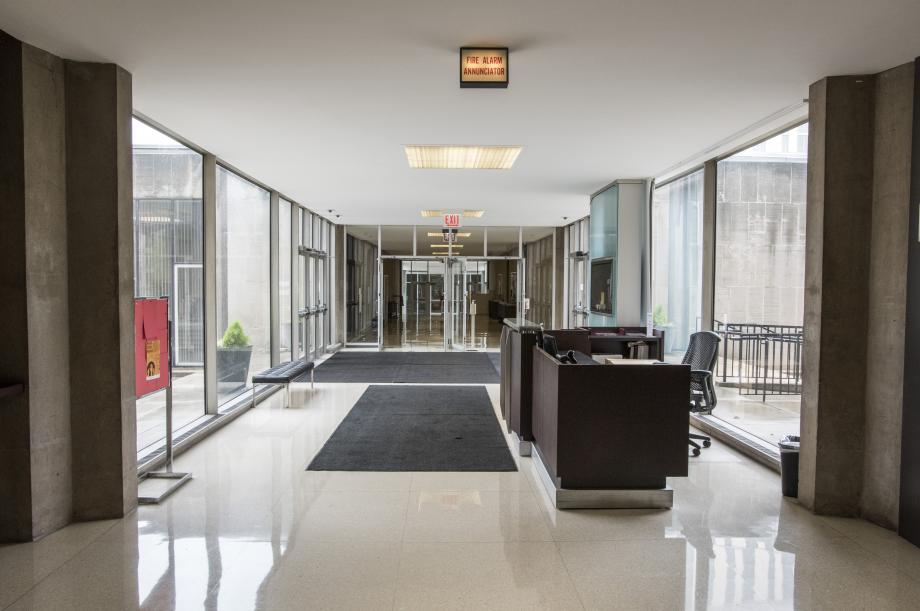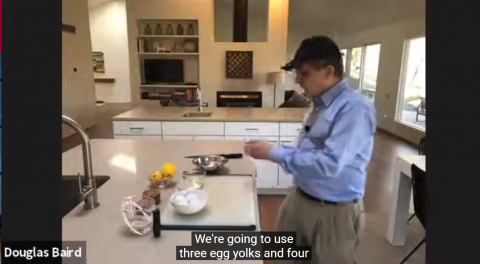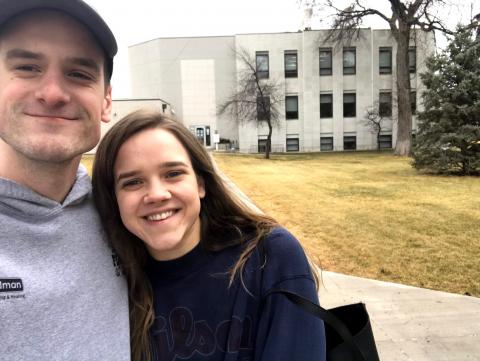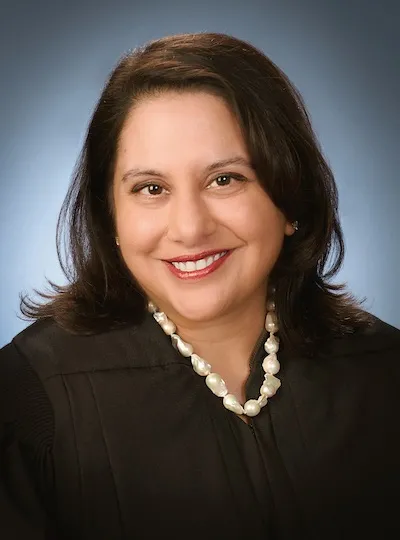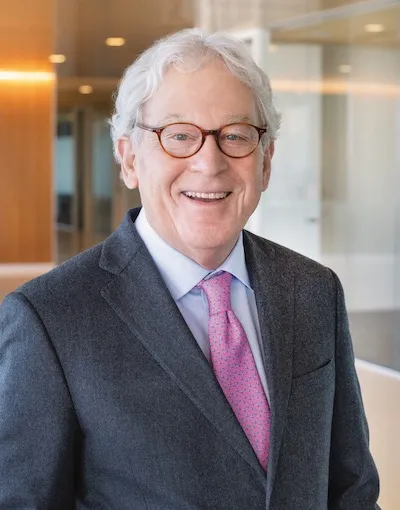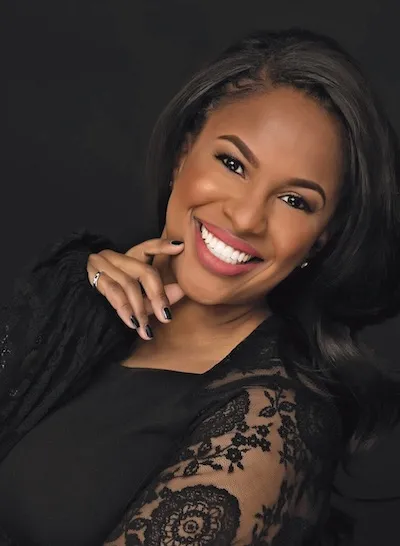The Unexpected Experiment
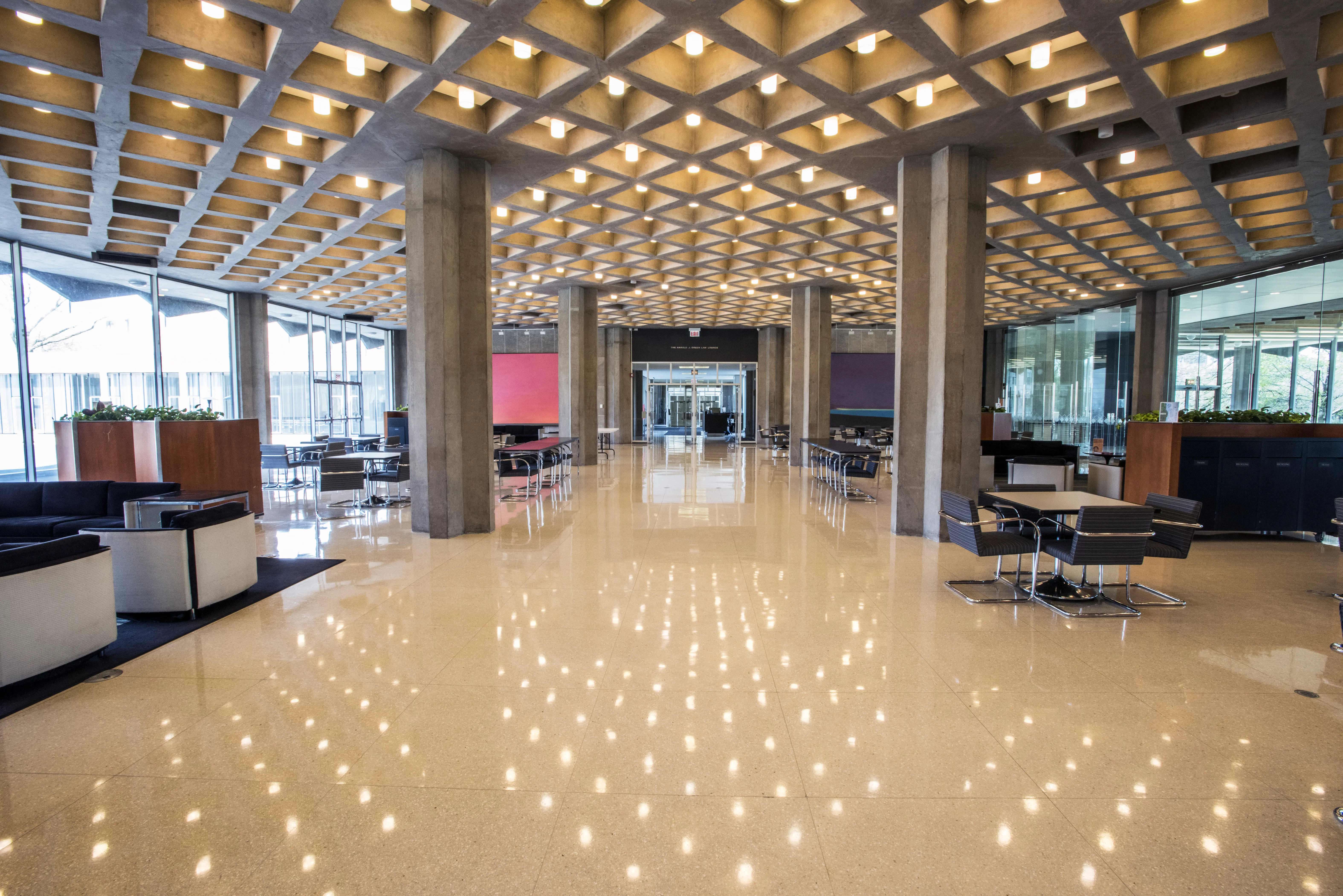
One day last spring, Professor Douglas Baird and Lecturer Christopher Sontchi introduced a guest speaker to the students in their corporate reorganization seminar. The University of Chicago had shifted to remote learning in late March in response to the coronavirus pandemic, so the previously scheduled visitor joined via Zoom. It worked out well: the guest, the principal debtor’s counsel in the Neiman Marcus bankruptcy, had just filed the high-profile case in Texas that morning, a development that almost certainly would have kept him from visiting an in-person class that day.
Which got Baird thinking: maybe this otherwise challenging academic quarter was also a chance to explore new practices and tap the full potential of remote platforms. The visitor, after all, was directly involved in a cutting-edge case that was relevant to the seminar—and he was able to offer insight as the case unfolded.
“He filed the case that morning, appeared for two and a half hours in our seminar in the afternoon, and then did his first-day hearing the next morning,” said Baird, the Harry A. Bigelow Distinguished Service Professor of Law. “So, first of all, he was able to tell us what was happening in real time. But secondly, it is not conceivable that in the [prepandemic] world, he wouldn’t have had to cancel at the last minute. ”
It was a Spring Quarter without precedent, one that began with a quick pivot from classrooms to Zoom—a technical and logistical feat that occurred largely over the Law School’s two-week spring break—and ended with the school’s first-ever virtual Diploma and Hooding Ceremony. During the intervening weeks, faculty and students conducted what amounted to a vast and determined pedagogical experiment. They explored what it meant to teach and learn remotely, considered the implications of physical distance, and continuously refined their tactics—all while navigating a public health crisis few could have imagined months earlier.
“It was a massive undertaking—not distinctive to the Law School—that occurred across the planet,” said Randal C. Picker, the James Parker Hall Distinguished Service Professor of Law. “From talking to the students, I feel like we executed well. Our [Information Technology] team made a big effort. This is not a perfect substitute for being in the classroom, but it was pretty good.”
Students developed new routines and workspaces, some in Hyde Park and some in other states. Professors adjusted their teaching to maintain the emphasis on serious inquiry while also acknowledging needs created by the remote platform and the crisis itself: COVID-19 vulnerability or infection, family and childcare needs, computer glitches, internet outages, and inescapable distractions. Grades were given pass/fail, classes were recorded, and some professors eliminated surprise from their cold call routines through advance warning, through rotations, or by seeking volunteers. They moved quickly to figure out what worked: some gathered students in small groups on Zoom to talk through ideas. At least one created a Google form so students could quickly and easily submit feedback. Baird, concerned that students in his first-year Contracts class might not speak up as issues arose, designated “a wing man”—an official interrupter—who became a repository for concerns requiring Baird’s attention. Adaptability, flexibility, and grace became key. Many grieved the temporary loss of traditions and physical spaces—in particular, students spoke wistfully of the Green Lounge—and there was no doubt that much of the community wished fervently for a return to in-person learning.
But the digital leap—and the shared foray into unfamiliar territory—also unleashed a torrent of new discoveries and opportunities. Clinical Professor Alison Siegler connected about 20 first-year students in her Criminal Procedure II class with remote pro bono work helping federal public defenders across the country address legal issues raised by the pandemic. Professors Adam Chilton and Will Baude held weekly virtual lunch talks to informally debate current issues, a popular series that sometimes drew more than 100 members of the community. (“Happy and grateful that you all put this together,” one student wrote in the Zoom chat box during the first talk, adding that she felt like she was back at the Law School.) Two clinic students delivered their first oral arguments before the US Court of Appeals for the Seventh Circuit remotely, one by Zoom and one by phone—experiences that helped them hone new skills. Virtual Coffee Messes, in which participants rotated among randomly selected small groups via Zoom’s “breakout rooms,” gave students, faculty, and staff a chance to interact with new people.
“Part of why I love the Law School is that I was able to throw myself into the community, and so when things went digital, I wanted to keep that aspect alive,” said Kelly Gregg, ’22, who became a fixture at Coffee Mess, Wine Mess, lunch talks, and other virtual events. “The online Coffee Messes have been a really great way to meet faculty, staff, 2Ls, and 3Ls who I might not have talked to otherwise. During a normal Coffee Mess, I’d just sit in the Green Lounge with my friends and maybe talk a bit to Professor [Saul] Levmore.”
Students continued to participate in class, sometimes in deeper, more robust ways.
“Despite all of the obstacles and distractions, many of the students were just as engaged as ever, if not more engaged,” Chilton said. “In my International Trade Law class, we had some of the best discussions on trade policy that I’ve ever had while teaching the course.”
As the quarter progressed, students and faculty developed a new level of comfort with video communication, sorting out issues with eye contact (do you look at the webcam or the faces on your screen?), audio etiquette (should you mute yourself when you’re not speaking?), and environment (do you use a virtual background or let others see where you live?) Some created new routines to account for what became known as Zoom fatigue, incorporating analog practices such as paper-and-pen notetaking, developing new hobbies, and scheduling occasional physically distant, masked meetups with friends.
Student organization leaders and journal editors became disciplined stewards of Zoom time, learning to choose carefully how and when to call online meetings.
“We’re mindful that people often have had a very long day of Zoom class,” said Claire Lee, ’21, the editor in chief of the student-run Legal Forum, which is focusing its next issue, and its fall symposium, on “Law for the Next Pandemic.” “We’ve shifted to email a lot of things we might have normally talked about in person, realizing that it’s not at the core of what we need to discuss. We’ve become more efficient, and when we meet on Zoom we focus on the big things that we really do need to figure out together.”
The Law School’s clinical programs found ways to work remotely, meeting with students and clients by Zoom and phone, swapping documents by email, and appearing remotely in court. Several took on new projects to give students a chance to contribute to the unfolding crisis, addressing pandemic-fueled issues related to prisons, small businesses, utility access, immigration, human rights, and more.
The Law School’s tight-knit community, accustomed to debating ideas in the Green Lounge and striking up impromptu conversations in hallways, continuously looked for ways to connect: in addition to online lunch talks and Coffee Mess, students participated in virtual office hours, virtual appointments with staff in the Dean of Students and Career Services offices, and small-group meetings with faculty via Zoom.
“I have been very pleasantly surprised by how well all of my professors have adjusted and responded, because this is unprecedented for all of us,” said Alexandra Green, ’22. “There has just been a really nice network of support, both from our faculty and from each other. We have a classwide group chat—and the different [Bigelow] sections also have group messages—where we share reminders about assignments and ask questions and schedule times to go to [virtual] office hours together. Everybody is really aware of what a big shift this is, and we’re all just trying to be a little mindful and a little more gracious.”
Some professors even continued to share meals and coffee with students—each eating in their own space, in front of a Zoom screen. “It seems a little odd, but there’s a shared commonality of eating at the same time,” Picker said.
The community’s collegial and caring spirit showed itself in little moments throughout the quarter, like the day Professor Emily Buss, the Mark and Barbara Fried Professor of Law, staged a spontaneous hooding when she encountered Jennifer Herrmann, ’20, on the street in her graduation regalia. Or when Elle D’Amore, a beloved member of the first-year class, passed away, and Professor Lior Strahilevitz invited her classmates to join him in sharing memories via Zoom—an impromptu gathering that drew more than 45 participants, including Elle’s parents. Or the night that 25 to 30 members of the Black Law Students Association (BLSA) met online to elect a new executive board; it was nice reminder of what they all meant to one another, several members said.
“It was the first time that quarter that many of us were all together,” said Green, who was elected BLSA president that night. “So even though it was a business-oriented night, it was just so good to see everybody.”
Travis Gidado, JD/MBA ’22, felt the same way about the BLSA elections. He also felt supported the day he emailed Professor Aziz Huq with a question about his Constitutional Law I class. Huq, the Frank and Bernice J. Greenberg Professor of Law, responded by asking for Gidado’s phone number.
“We talked for about 10 minutes,” Gidado said. “Professor Huq didn’t have to do that, but he did, and it was amazing. Professors are experimenting with new ways of interacting with students, and it’s appreciated because some students may be reluctant to engage these brilliant minds for any number of reasons, especially in a remote capacity. To see professors breaking down that barrier—whether it’s through a forum that makes it easier for students to participate or by simply picking up the phone—is powerful and will only improve the educational experience moving forward.”
Creating a New Classroom Dynamic
The classroom innovations, big and small, began almost immediately.
Strahilevitz, the Sidley Austin Professor of Law, replicated casual preclass conversations by using Zoom’s breakout room feature to assign early arrivals to small groups. Clinical Professor Claudia Flores, the director of the Global Human Rights Clinic, created a remote speaker series to discuss human rights issues related to the pandemic. Professor Alison LaCroix, the Robert Newton Reid Professor of Law, posted certain key lecture details online so her students could focus on the discussion rather than on frantic notetaking. In addition to cold calls, Baird asked for volunteers and then met via Zoom with the group the day before the discussion.
“I volunteered for a Thursday class, so Wednesday afternoon I and three others popped into a Zoom meeting with Professor Baird for 30 minutes to go over the material,” Gregg said. “I think the quality of our cold calls was higher because everybody had a chance to test the waters.”
And Picker, continuing a “Talk to Your Neighbor” segment that he uses in the physical classroom, periodically sent students into breakout rooms to talk through the material.
“One thing we’ve become aware of is that you need to mix the modes up—you cannot be doing one thing for 65 minutes,” Picker said. “Talking to your neighbors in breakout rooms is one way of injecting active learning into the class.”
He paused.
“We underexperiment in education,” he continued. “This was a giant forced experiment—and I think it was good to try new things and see what would happen.”
There was value, he and others said, in reflecting on what is best practiced in person—and what might continue to work online, even once physical classes have resumed. He is among those to see remote platforms as an opportunity to broaden the circle of contributors and overcome the barriers of distance.
“I gave a talk at a conference in Peru this morning, which I recorded a week ago standing in a corner of our bedroom,” Picker said. “I didn’t have to go anywhere—and getting to Lima’s not easy, I’ve looked.”
The Law School will benefit long term from the insights gained during remote learning, Dean Thomas J. Miles said. “The focus on whether this technology is a perfect substitute for in-person misses the larger benefit of this rapid technological adoption,” said Miles, the Clifton R. Musser Professor of Law and Economics. “When the pandemic passes, much of our teaching will revert to the traditional in-person form, especially in our core courses. But in electives and specialized offerings, it is likely that some remote teaching will continue. We have learned that technology allows us to bring into our educational community the voices, expertise, and perspectives that the burdens of travel normally deny us.”
From the beginning, students experimented, too. They identified setups that fit their personal preferences—determining, for instance, how to configure the screen, or sometimes two screens, to fit their notes, the reading assignment, and a Zoom window. They identified obstacles and explored strategies for succeeding in the remote format—insights that could inform their approach to digital communication in the future.
Hannah Abrahams, ’22, for instance, realized that informal discussions—something that was difficult to find while quarantining alone in her Hyde Park apartment—are a valuable part of processing and absorbing new material. To compensate, she sought out new opportunities to test ideas, including during regular family FaceTime calls with her parents (teachers in Williamsburg, Virginia) and her sister, then a fourth-year medical student.
“I’ll try to explain a concept to a family member, and if at the end that they say, 'I don’t know what language you’re speaking,’ then I know that I don’t know it well enough,” she said.
Gidado developed a trick for answering questions in class: he’d turn off the gallery view in Zoom to focus solely on the person speaking.
“Then it’s just me and the professor,” he said. “It feels like we’re having the conversation directly.”
Some students needed to adapt to a new classroom rhythm. Lee, for instance, found that her pattern of engagement had changed.
“I think about things more, but I raise my hand a little bit less,” she said, echoing a point made by several of her classmates. “In the classroom, it’s just easier [to speak up]—someone asks a question and a long discussion might follow, but on Zoom, especially when there are so many people, it’s different.”
Hand raising on Zoom requires a bit more intention, said Joe Casavecchia, ’20. Rather than spontaneously lifting an arm or jumping into a discussion, on Zoom students must click a “Raise Hand” button, wait for acknowledgment, and unmute themselves.
“It was a good thing and a bad thing—on one hand, it was harder for students to interrupt each other,” Casavecchia said. “On the other hand, it takes more to speak up.”
Professors looked for ways to stimulate discussion in the new format. In Lee’s Immigration Law class, for instance, Chilton changed things up one day by rapidly calling on students—not in the tradition of a typical cold call but to seek out gut responses to a series of questions.
“It was more, 'Do you think this is right? Do you think this is wrong?’” Lee said. It ended up being an energetic and fascinating discussion, and one that was easier to join.
Some students said that the altered rhythm opened up space for new intellectual pursuits.
“I’m more inclined to go down intellectual rabbit holes than would be the case if I had 50 other things to do, as was the norm prepandemic,” Gidado said. “For example, in Con Law I, which ended up being perhaps the most complicated class I took last quarter and also the most intellectually rich, I found myself asking these larger questions about federalism and its underlying presumptions, which are particularly salient in this time of coronavirus. Right now, you see things like our penchant for individualism butting up against the need for collective action. And so much of that tension springs from the founding period.”
He ended up searching for additional material and engaging in conversation with Huq. “From an academic perspective,” he said, “it was really enriching.”
Still, there were frustrations. Among them: Gidado needed to figure out how to recreate the boost that comes from having classmates physically at your side.
“In the classroom, you might be on a really thorny cold call just trying to survive, and you’ll look around the room at your peers and receive nonverbal support in return. Sadly, you can’t do that as easily in a Zoom setting,” Gidado said. “So I learned you have to make an effort to reach out by text or via Zoom to say, 'Hey, that was awesome!’ or 'Well done!’” and be more intentional in displaying that camaraderie."
Capturing the essence of a group—that feeling of being together and sharing ideas—was something students and faculty worked hard to approximate, though nearly everyone recognized that certain elements of the in-person experience could never be reproduced.
“There’s just so much energy when you walk into one of our big classrooms for a 1L class, and I like that—and I was surprised by how much I felt the absence,” LaCroix said. “In a physical classroom, you can tell when people are confused, and you can address it. There are plenty of times when I like to think I’m injecting some humor, but now I feel like I’m just throwing it out into the void. Students will tell me later that there were moments that were funny, but they’ll say, 'If I laugh, I’m laughing alone in a room.’ So there’s just a different dynamic. Physical space matters a lot to how people experience things.”
Confronting Challenges, Finding Community
To help recreate the feel of the classroom, Bigelow Fellow Elizabeth Reese at one point began asking her first-year legal research and writing students to unmute themselves. When that wasn’t enough, she kept iterating: she learned which students were most likely to visibly telegraph their reactions and tried to keep their faces on her screen. At one point, she even asked students to bump up the facial animation, consciously expressing themselves as they might in the classroom.
“At first I thought it seemed like an awkward request, but it wasn’t,” said Reese, who was in the first year of her two-year teaching fellowship when the pandemic began. “This is the situation we’re in. They want me to be a good instructor, and in order to be a good instructor, I need feedback.”
The fact was, certain aspects of Spring Quarter were just really hard. There were childcare pressures for students and faculty with new babies, toddlers, or school-age children learning at home. (During one Zoom call, one professor asked another about the piece of paper dangling haphazardly from a string in the middle of the room. The second professor laughed as a child ran by waving a scarf with the family dog close behind. “Oh, that?” she said. “It’s the sign that said, 'Please be quiet, Mom’s on a call.’”)
The anxieties were persistent. Even before George Floyd was killed in Minneapolis in May, students worried about finances, COVID-19 infections, friendships, their families, and, of course, technology. LaCroix remembers a student’s screen freezing as she answered a cold call in class. There was a general buzz of stress about those sorts of mishaps, and LaCroix said it was important to allay those fears.
“I just said, 'It’s OK, I’ll come back to you,’” she said. “The discourse existed in a different space, and it was important for everybody to work with that.”
Early in the quarter, Abrahams spilled water on her MacBook in the middle of her Property class—destroying the laptop and knocking herself partly out of commission for several days while she waited for a replacement from Apple.
“The sunlight was in my eyes and, when I reached up to close my curtain, I just knocked my water bottle over,” said Abrahams, who frantically emailed classmates and ultimately reached out to her professors and the Dean of Students Office. “It was nerve racking, and not my favorite day of quarantine.”
It worked out, though. While she waited for the new computer, she was able to dial in to classes by phone and, later, watch class recordings.
For some, there were unexpected distractions.
“Just the other day, my parents’ air conditioning unit went out completely out of nowhere,” Green said in May, as she quarantined at home in Huntsville, Alabama. “The entire day we had a heating and air company in and out of pretty much every part of the house, drilling and cutting into walls and taking units out—it was a lot of noise.”
She eventually cut herself a break and regrouped the next day.
Some students described a tightening of bonds that came from navigating a difficult situation together, sharing humor through lighthearted uses of Zoom, and from seeing their classmates and professors at home, surrounded by personal items, pets, and children.
Students in LaCroix’s classes, for instance, enjoyed the times she pulled out her daughters’ US-map placemat to make a point about geography, and they became accustomed to the John Marshall bobblehead on the shelf behind her desk. Professor William Hubbard impressed Civil Procedure students by using his stylus to draw a map of the continental United States on Zoom’s whiteboard feature. Strahilevitz used virtual Zoom backgrounds related to the cases he was teaching in Property, and he introduced students to his Siberian tabby cat, Walter Whiskers, during class discussion of a landmark case involving a cat owner who sued her condominium association over its “no pets” policy.
Professor David Strauss, the Gerald Ratner Distinguished Service Professor of Law, and Clinical Professor Sarah Konsky, directors of the Law School’s Jenner & Block Supreme Court and Appellate Clinic, looked for ways to put their clinic students at ease, building in time to chat about lives and meet the pets who sauntered into view during meetings.
“At the beginning of the quarter, David and I decided that we needed to break the ice and get the comfort level up because there was just stress and anxiety and nervousness,” Konsky said. “We tried to deal with that head on, reminding the students that we understood what they were going through and that we wanted to support them, while also trying to keep things light.”
The six Bigelow Fellows worked to help first-year students adapt to the remote format for an important rite of passage: 1L Moot Court, during which first-year students argue a fictional case before a panel of alumni and faculty judges.
“I was worried that [doing this over Zoom] would be awkward, that there would be a lag between when a judge interrupted to ask a question and when the student stopped talking and that they might miss the beginning of a question,” Reese said. “Little moments like that can make all the difference in feeling like you’re in control of the oral argument. But all of it went well. Actually, it was fantastic.”
As the quarter drew to a close, several students said they had discovered new strength in themselves—an increased ability to weather uncertainty, to approach situations with flexibility, and to confront unexpected issues.
“The first week was really tough just because it was so different than it’s ever been before,” Lee said. “But now that we’re at the end of the quarter, it feels very normal. I have a dual screen set up at home. I have a system down for getting through the day.”
Casavecchia—who graduated and got married this spring—said the quarter “probably went as well as it could have.”
After his last day in class, he posted a note on LinkedIn, urging his classmates to keep things in perspective:
Earlier today, I virtually attended my last class ever at the University of Chicago Law School. Professor Alison LaCroix ended class with a reminder that when studying legal history, context matters.
Context matters, a lot. And the context in which the Class of 2020 is graduating is unprecedented.
The upwelling of emotions brought upon by living through a global pandemic highlights the adaptability of humankind. As individuals and communities, over the last few months we’ve tapped into the reservoirs of goodness that sustain us. COVID-19 canceled my wedding, but we still got married. (Thanks Emma Robinson!!) It canceled my graduation, but we’re still graduating. Your ability to adapt to changing circumstances is what will make you a great employee, a great spouse, and a great member of your community.
When my classmates and I become hiring attorneys, I hope we remember to consider context and give weight to the challenges facing our applicants. Everyone in my network has been helpful beyond words this year . . . You have given me a relentless amount of hope for our futures.
I am indebted to all of you for your love and friendship.
A few days later, Casavecchia and the rest of the Class of 2020 graduated.
